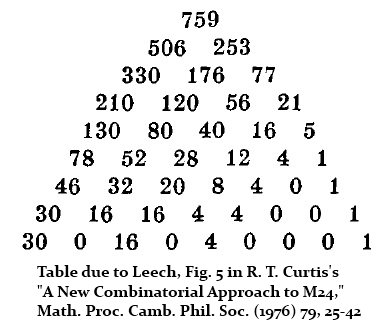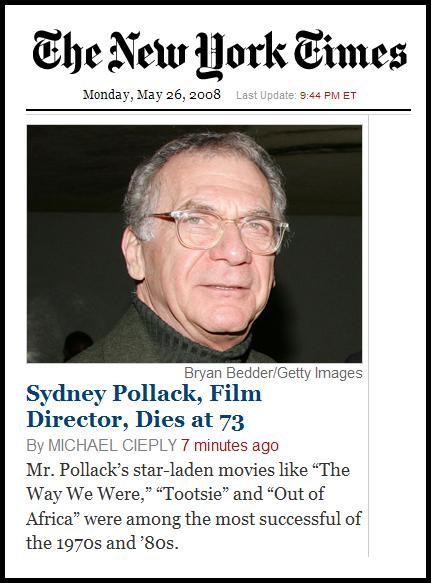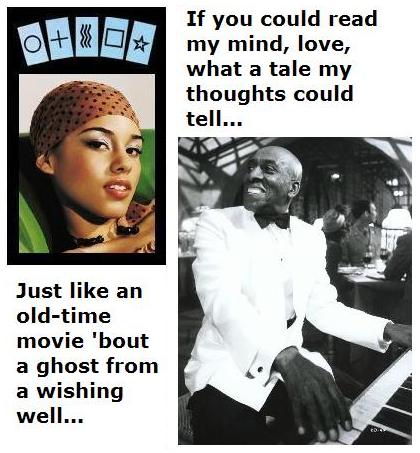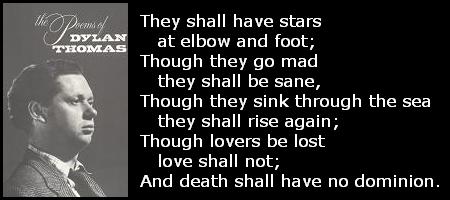See as well a search for intelligent life at Santa Cruz —
Related art —
From a post of January 3, 2024 —
"Hello darkness, my old friend.
I’ve come to talk with you again."
The above image was flipped to reverse left and right.
Related reading: Other posts tagged Darkness and …
Related material: Other posts tagged Star Brick and . . .

"And we may see the meadow in December,
icy white and crystalline"
— Song lyric, "Midnight Sun"
From the Log24 search in the previous post for "Dimensions" —
"Hello darkness, my old friend.
I’ve come to talk with you again."
The above image was flipped to reverse left and right.
Related reading: Other posts tagged Darkness and …
In memory of Jimmy Breslin, who reportedly died today at 88 —
From "Dimensions," (Log24, Feb. 15, 2015) —

"Hello darkness, my old friend.
I’ve come to talk with you again."
The previous post deals with the theory, now becoming widely known,
that the musical "Grease" is really about Sandy's dying dream of heaven.
Another such dream in Oslo, described by the Vigeland Museum —
|
The Monolith "The Monolith was carved from one single granite block, hence the name (mono: one, litho: stone). Whereas the melancholy theme in the fountain is the eternal life cycle, the column gives room to a totally different interpretation: Man's longing and yearning for the spiritual and divine. Is the column to be understood as man's resurrection? The people are drawn towards heaven, not only characterised by sadness and controlled despair, but also delight and hope, next to a feeling of togetherness, carefully holding one another tight in this strange sense of salvation." |
I prefer a different monolith.
"Design is how it works." — Steve Jobs
From a commercial test-prep firm in New York City—
From the date of the above uploading—
|
|
From a New Year's Day, 2012, weblog post in New Zealand—

From Arthur C. Clarke, an early version of his 2001 monolith—
"So they left a sentinel, one of millions they have scattered
throughout the Universe, watching over all worlds with the
promise of life. It was a beacon that down the ages has been
patiently signaling the fact that no one had discovered it.
Perhaps you understand now why that crystal pyramid was set…."
The numerical (not crystal) pyramid above is related to a sort of
mathematical block design known as a Steiner system.
For its relationship to the graphic block design shown above,
see the webpages Block Designs and The Diamond Theorem
as well as The Galois Tesseract and R. T. Curtis's classic paper
"A New Combinatorial Approach to M24," which contains the following
version of the above numerical pyramid—

For graphic block designs, I prefer the blocks (and the parents)
of Grand Rapids to those of New York City.
For the barbed tail of Clarke's "Angel" story, see the New Zealand post
of New Year's Day mentioned above.
From tonight's online New York Times —
John McCracken, Sculptor of Geometric Forms, Dies at 76
McCracken died in Manhattan on Friday, April 8.
From Christopher Knight in tonight's online LA Times —
… the works embody perceptual and philosophical conundrums. The colored planks stand on the floor like sculptures….
McCracken was bedeviled by Stanley Kubrick's famously obscure science-fiction epic, "2001: A Space Odyssey," with its iconic image of an ancient monolith floating in outer space. The 1968 blockbuster was released two years after the artist made his first plank.
"At the time, some people thought I had designed the monolith or that it had been derived from my work," he told art critic Frances Colpitt of the coincidence in a 1998 interview.
Two photos of McCracken's 1967 Black Plank seem relevant—
November 28, 2010 (Click to enlarge) —
December 28, 2010 (Click to enlarge) —
Material that an artist might view as related, if only synchronistically—
Two posts in this journal on the dates the photos were taken—
The Embedding on November 28 and Dry Bones on December 28.
The photos are of an exhibition titled "There is nothing to see here" at the
National Gallery of Art, October 30, 2010-April 24, 2011 —
For related nihilism from the National Gallery, see "Pictures of Nothing" in this journal.
Some less nihilistic illustrations—

A photo by one of the artists whose work is displayed above beside McCracken's—

"Accentuate the Positive."
— Clint Eastwood
Transit Authority
In memory of
Stanley Kubrick
(overlooked in
yesterday's memorial)
| "For believers the day of death, and even more the day of martyrdom, is not the end of all; rather, it is the 'transit' towards immortal life. It is the day of definitive birth, in Latin, dies natalis." |

"'Wherever you come near
the human race, there's layers
and layers of nonsense,'
says the Stage Manager in
Thornton Wilder's 'Our Town.'"
— Today's sermon
from Frank Rich



For more layers, see
James A. Michener's
The Source.
| From April 28, 2008:
Religious Art
The black monolith of One artistic shortcoming The following One approach to "Transformations play See 4/28/08 for examples |
| From Wallace Stevens: A World of Transforming Shapes, by Alan D. Perlis, Bucknell University Press, 1976, pp. 117-118:
"… his point of origin is external nature, the fount to which we come seeking inspiration for our fictions. We come, many of Stevens's poems suggest, as initiates, ritualistically celebrating the place through which we will travel to achieve fictive shape. Stevens's 'real' is a bountiful place, continually giving forth life, continually changing. It is fertile enough to meet any imagination, as florid and as multifaceted as the tropical flora about which the poet often writes. It therefore naturally lends itself to rituals of spring rebirth, summer fruition, and fall harvest. But in Stevens's fictive world, these rituals are symbols: they acknowledge the real and thereby enable the initiate to pass beyond it into the realms of his fictions. Two counter rituals help to explain the function of celebration as Stevens envisions it. The first occurs in 'The Pediment of Appearance,' a slight narrative poem in Transport to Summer. A group of young men enter some woods 'Hunting for the great ornament, The pediment of appearance.' Though moving through the natural world, the young men seek the artificial, or pure form, believing that in discovering this pediment, this distillation of the real, they will also discover the 'savage transparence,' the rude source of human life. In Stevens's world, such a search is futile, since it is only through observing nature that one reaches beyond it to pure form. As if to demonstrate the degree to which the young men's search is misaligned, Stevens says of them that 'they go crying/The world is myself, life is myself,' believing that what surrounds them is immaterial. Such a proclamation is a cardinal violation of Stevens's principles of the imagination. For in 'Notes Toward a Supreme Fiction' he tells us that ... the first idea was not to shape the clouds In imitation. The clouds preceded us. There was a muddy centre before we breathed. There was a myth before the myth began, Venerable and articulate and complete. From this the poem springs: that we live in a place That is not our own and, much more, not ourselves And hard it is in spite of blazoned days. We are the mimics. (Collected Poems, 383-84) Believing that they are the life and not the mimics thereof, the world and not its fiction-forming imitators, these young men cannot find the savage transparence for which they are looking. In its place they find the pediment, a scowling rock that, far from being life's source, is symbol of the human delusion that there exists a 'form alone,' apart from 'chains of circumstance.' A far more productive ritual occurs in 'Sunday Morning.'…." |
For transformations of a more
specifically religious nature,
see the remarks on
Richard Strauss,
"Death and Transfiguration,"
(Tod und Verklärung, Opus 24)
in Mathematics and Metaphor
on July 31, 2008, and the entries
of August 3, 2008, related to the
death of Alexander Solzhenitsyn.

Great Directors
“After his return to acting in ‘Tootsie,’ Pollack took movie roles under directors Robert Altman in ‘The Player’ (1992), Woody Allen in ‘Husbands and Wives’ (1992) and Stanley Kubrick in ‘Eyes Wide Shut’ (1999). He said he chose roles in part to study other great directors.”
The black monolith of
Kubrick's 2001 is, in
its way, an example
of religious art.

One artistic shortcoming
(or strength– it is, after
all, monolithic) of
that artifact is its
resistance to being
analyzed as a whole
consisting of parts, as
in a Joycean epiphany.
The following
figure does
allow such
an epiphany.

One approach to
the epiphany:
"Transformations play
a major role in
modern mathematics."
– A biography of
Felix Christian Klein
The above 2×4 array
(2 columns, 4 rows)
furnishes an example of
a transformation acting
on the parts of
an organized whole:

For other transformations
acting on the eight parts,
hence on the 35 partitions, see
"Geometry of the 4×4 Square,"
as well as Peter J. Cameron's
"The Klein Quadric
and Triality" (pdf),
and (for added context)
"The Klein Correspondence,
Penrose Space-Time, and
a Finite Model."
For a related structure–
not rectangle but cube–
see Epiphany 2008.
“A shape of some kind
for something that
has no shape.”
— Roy Scheider
in “2010”
For further details,
click on the monolith.
See also the Keystone State’s
lottery numbers for Sunday–
Grammy night and the
date of Scheider’s death:

These numbers suggest
the following links.
For further details related
to death and religion, see
a version of the cheer
“1234, who are we for?”
For further details related
to Grammy night, see
6/17, 2007:
A selection from the
Stephen King Hymnal

“… it’s going to be
accomplished in steps,
this establishment
of the Talented in
the scheme of things.”
— Anne McCaffrey,
Radcliffe ’47,
To Ride Pegasus
Last night's entry "A Midrash for Hollywood" discussed a possible interpretation of yesterday's Pennsylvania Lottery numbers– mid-day 384, evening 952.
In memory of a blacklisted Hollywood screenwriter who died yesterday, here is another interpretation of those numbers.
First, though, it seems appropriate to quote again the anonymous source from "Heaven, Hell, and Hollywood" on screenwriters– "You can be replaced by some Ping Pong balls and a dictionary." An example was given illustrating this saying. Here is another example:
Yesterday's PA lottery numbers in the dictionary–
Webster's New World Dictionary,
College Edition, 1960–
Page 384: "Defender of the Faith"
Related Log24 entries:
"To Announce a Faith," Halloween 2006,
and earlier Log24 entries from
that year's Halloween season
Page 952: "monolith"
Related Log24 entries:
"Shema, Israel," and "Punch Line"
(with the four entries that preceded it).
It may not be entirely irrelevant that a headline in last night's entry– "Lonesome No More!"– was linked to a discussion of Kurt Vonnegut's Slapstick, that a film version of that novel starred Jerry Lewis, and that yesterday afternoon's entry quoted a vision of "an Ingmar Bergman script as directed by Jerry Lewis."
April is Math Awareness Month.
This year's theme is "mathematics and art."

"Art isn't easy."
— Stephen Sondheim

|
A Poem for Pinter
Oct. 13, 2005 The Guardian on Harold Pinter, winner of this year's Nobel Prize for Literature: "Earlier this year, he announced his decision to retire from playwriting in favour of poetry," Michael Muskal in today's Los Angeles Times: "Pinter, 75, is known for his sparse and thin style as well as his etched characters whose crystal patter cuts through the mood like diamond drill bits." Robert Stone, A Flag for Sunrise (See Jan. 25): "'That old Jew gave me this here.' Egan looked at the diamond…. 'It's worth a whole lot of money– you can tell that just by looking– but it means something, I think. It's got a meaning, like.'
'Let's see,' Egan said, 'what would it mean?' He took hold of Pablo's hand cupping the stone and held his own hand under it. '"The jewel is in the lotus," perhaps that's what it means. The eternal in the temporal….'"
"Modal logic was originally developed to investigate logic under the modes of necessary and possible truth. The words 'necessary' and 'possible' are called modal connectives, or modalities. A modality is a word that when applied to a statement indicates when, where, how, or under what circumstances the statement may be true. In terms of notation, it is common to use a box [] for the modality 'necessary' and a diamond <> for the modality 'possible.'"
Commentary:
"Waka" also means Japanese poem or Maori canoe. (For instance, this Japanese poem and this Maori canoe.)
For a meditation on "bang splat," see Sept. 25-29. For the meaning of "tick tick," see Emily Dickinson on "degreeless noon." "Hash," of course, signifies "checkmate." (See previous three entries.) |
For language more suited to
the year's most holy day, see
this year's Yom Kippur entry,
from October 2.
That was also the day of the
Amish school killings in
Pennsylvania and the day that
mathematician Paul Halmos died.
For more on the former, see
Death in Two Seconds.
For more on the latter, see
The Halmos Tombstone.
Into the Dark
O dark dark dark. They all go into the dark,
The vacant interstellar spaces, the vacant into the vacant
….
And we all go with them, into the silent funeral,
Nobody’s funeral, for there is no one to bury.
I said to my soul, be still, and let the dark come upon you
Which shall be the darkness of God. As, in a theatre,
The lights are extinguished, for the scene to be changed
With a hollow rumble of wings, with a movement of
darkness on darkness….
— T. S. Eliot, Four Quartets
“I’m well past eighty now and fairly certain I won’t see ninety but I’d like more of a choice than Hell or Paradise when I leave. Now that we know the Bible was created by a vote of Emperor Constantine’s clergy, wouldn’t we all be better off if other options were offered? Or is the fear of what happens after death the glue that holds Religion together? I hope not because I believe better of God.
As a Deist, I have no fear or doubts of the way that life ends. I can bravely face the reality of ceasing to exist because the God of my heart comforts me by promising to provide a dark, starless night of nothingness when my visit is over.”
— Paul Winchell (pdf) (See previous entry.)
Paul Winchell was born at the winter solstice — the longest night — December 21, 1922.
For another view of the longest night, see the five Log24 entries ending on the day after the longest night of 2003. Summary of those entries:
After the Long Night

ART WARS for
Trotsky’s Birthday
Part I:
Symbols
From my entry of July 26, 2003, in memory
of Marathon Man director John Schlesinger:
|
Bright Star and Dark Lady “Mexico is a solar country — but it is also a black country, a dark country. This duality of Mexico has preoccupied me since I was a child.” — Octavio Paz, |
||
|
Bright Star
|
Amen. |
Dark Lady
|
For the meaning of the above symbols, see
Kubrick’s 1x4x9 monolith in 2001,
the Halmos tombstone in Measure Theory,
and the Fritz Leiber Changewar stories.
Part II:
Sunday in the Park with Death
To Leon from Diego —
Details of a mural,
A Dream of a Sunday Afternoon
in Alameda Park,
Fresco, 1947-48,
Alameda Hotel, Mexico City:
Three’s a Crowd:
Symbol:
ART WARS Sept. 1, 2003:
Sir Terry Frost Dies
A noted English abstract painter died at 87 on Monday, September 1. From a memorial essay on Sir Terry Frost, born in 1915, in The Daily Telegraph:
“He was educated at Leamington Spa Central School where he edited the art magazine, but left at 15 to work….” His first jobs included, the Telegraph says, painting “the red, white and blue targets on to fighter planes.”

The “target” the Telegraph refers to
is known as the Royal Air Force Roundel.
It may indeed have functioned as a target, but it was originally intended only as a distinctive identifying mark.
Some of Frost’s later work may be viewed at the British Government Art Collection. For some of Frost’s work more closely related to his early “target” theme, see the Badcock’s Gallery site.
An example:

For related religious
and cinematic material, see
Pilate, Truth, and Friday the Thirteenth,
a meditation for Good Friday of 2001,
a meditation for Friday the Thirteenth
of September, 2002,
and
from the day Frost died, which concludes
with links related to the religious symbol of
2001:

Monolith
“Music can name the unnameable
and communicate the unknowable.”
— Quotation attributed to Leonard Bernstein
“Finally we get to Kubrick’s ultimate trick…. His secret is in plain sight…. The film is the monolith. In a secret that seems to never have been seen by anyone: the monolith in the film has the same exact dimensions as the movie screen on which 2001 was projected.”
— Alchemical Kubrick 2001, by Jay Weidner
My entry of Saturday, August 30,
included the following illustration:

My entry of Monday, September 1,
concluded with the black monolith.

“There is little doubt that the black monolith
in 2001 is the Philosopher’s Stone.”
— Alchemical Kubrick 2001, by Jay Weidner
The philosopher Donald Davidson
died on Saturday, August 30.
The New York Times says that as an undergraduate, Davidson “persuaded Harvard to let him put on ‘The Birds’ by Aristophanes and played the lead, Peisthetairos, which meant memorizing 700 lines of Greek. His friend and classmate Leonard Bernstein, with whom he played four-handed piano, wrote an original score for the production.”
Perhaps they are still making music together.
The Unity of Mathematics,
or “Shema, Israel”
A conference to honor the 90th birthday (Sept. 2) of Israel Gelfand is currently underway in Cambridge, Massachusetts.
The following note from 2001 gives one view of the conference’s title topic, “The Unity of Mathematics.”
Reciprocity in 2001by Steven H. Cullinane
|
For four different proofs of Euler’s result, see the inexpensive paperback classic by Konrad Knopp, Theory and Application of Infinite Series (Dover Publications).
Evaluating Zeta(2), by Robin Chapman (PDF article) Fourteen proofs!
Zeta Functions for Undergraduates
Reciprocity Laws
Reciprocity Laws II
Recent Progress on the Langlands Conjectures
For more on
the theme of unity,
see

The Transcendent
Signified
“God is both the transcendent signifier
and transcendent signified.”
— Caryn Broitman,
Deconstruction and the Bible
“Central to deconstructive theory is the notion that there is no ‘transcendent signified,’ or ‘logos,’ that ultimately grounds ‘meaning’ in language….”
— Henry P. Mills,
The Significance of Language,
Footnote 2
“It is said that the students of medieval Paris came to blows in the streets over the question of universals. The stakes are high, for at issue is our whole conception of our ability to describe the world truly or falsely, and the objectivity of any opinions we frame to ourselves. It is arguable that this is always the deepest, most profound problem of philosophy. It structures Plato’s (realist) reaction to the sophists (nominalists). What is often called ‘postmodernism’ is really just nominalism, colourfully presented as the doctrine that there is nothing except texts. It is the variety of nominalism represented in many modern humanities, paralysing appeals to reason and truth.”
— Simon Blackburn, Think,
Oxford University Press, 1999, page 268
The question of universals is still being debated in Paris. See my July 25 entry,
That entry discusses an essay on
mathematics and postmodern thought
by Michael Harris,
professor of mathematics
at l’Université Paris 7 – Denis Diderot.
A different essay by Harris has a discussion that gets to the heart of this matter: whether pi exists as a platonic idea apart from any human definitions. Harris notes that “one might recall that the theorem that pi is transcendental can be stated as follows: the homomorphism
Harris illustrates this with
an X in a rectangle:

For the complete passage, click here.
If we rotate the Harris X by 90 degrees, we get a representation of the Christian Logos that seems closely related to the God-symbol of Arthur C. Clarke and Stanley Kubrick in 2001: A Space Odyssey. On the left below, we have a (1x)4×9 black monolith, representing God, and on the right below, we have the Harris slab, with X representing (as in “Xmas,” or the Chi-rho page of the Book of Kells) Christ… who is, in theological terms, also “the variable par excellence.”
|
Kubrick’s |
Harris’s |
For a more serious discussion of deconstruction and Christian theology, see
Funeral March
|
John Schlesinger dead at 77; LOS ANGELES – Oscar-winning director John Schlesinger, who daringly brought gay characters into mainstream cinema with Midnight Cowboy and tapped into nightmares with the teeth-drilling torture of Marathon Man, died Friday at 77. The British-born filmmaker…. died about 5:30 a.m…. |
Schlesinger also directed The Day of the Locust, based on a novel by Nathanael West.
See Heaven, Hell, and Hollywood and
From the latter:
“Then you know your body’s sent,
Don’t care if you don’t pay rent,
Sky is high and so am I,
If you’re a viper — a vi-paah.”
— The Day of the Locust,
by Nathanael West (1939),
New Directions paperback,
1969, page 162
This song may be downloaded at
That same site begins with a traditional Mexican song…
“La cucaracha, la cucaracha,
ya no puede caminar,
porque no quiere,
porque le falta
marihuana que fumar.”
(“The cockroach, the cockroach,
can’t walk anymore,
because he doesn’t want to,
because he has no
marihuana to smoke.”)
This suggests an appropriate funeral march for John Schlesinger:
“Ya murió la cucaracha, ya la llevan a enterrar…” – La Cucaracha
Those attending Schlesinger’s wake, as opposed to his funeral, may wish to perform other numbers from the Pot Culture page, which offers a variety of “viper” songs.
|
Bright Star and Dark Lady “Mexico is a solar country — but it is also a black country, a dark country. This duality of Mexico has preoccupied me since I was a child.” — Octavio Paz, |
||
|
Bright Star
|
Amen.
|
Dark Lady
|
For the meaning of the above symbols, see
Kubrick’s 1x4x9 monolith in 2001,
the Halmos tombstone in Measure Theory,
and the Fritz Leiber Changewar stories.
Concluding Unscientific Postscript:
Oh, yes… the question of
Heaven or Hell for John Schlesinger…
Recall that he also directed the delightful
Cold Comfort Farm and see
last year’s entry for this date.
Powered by WordPress